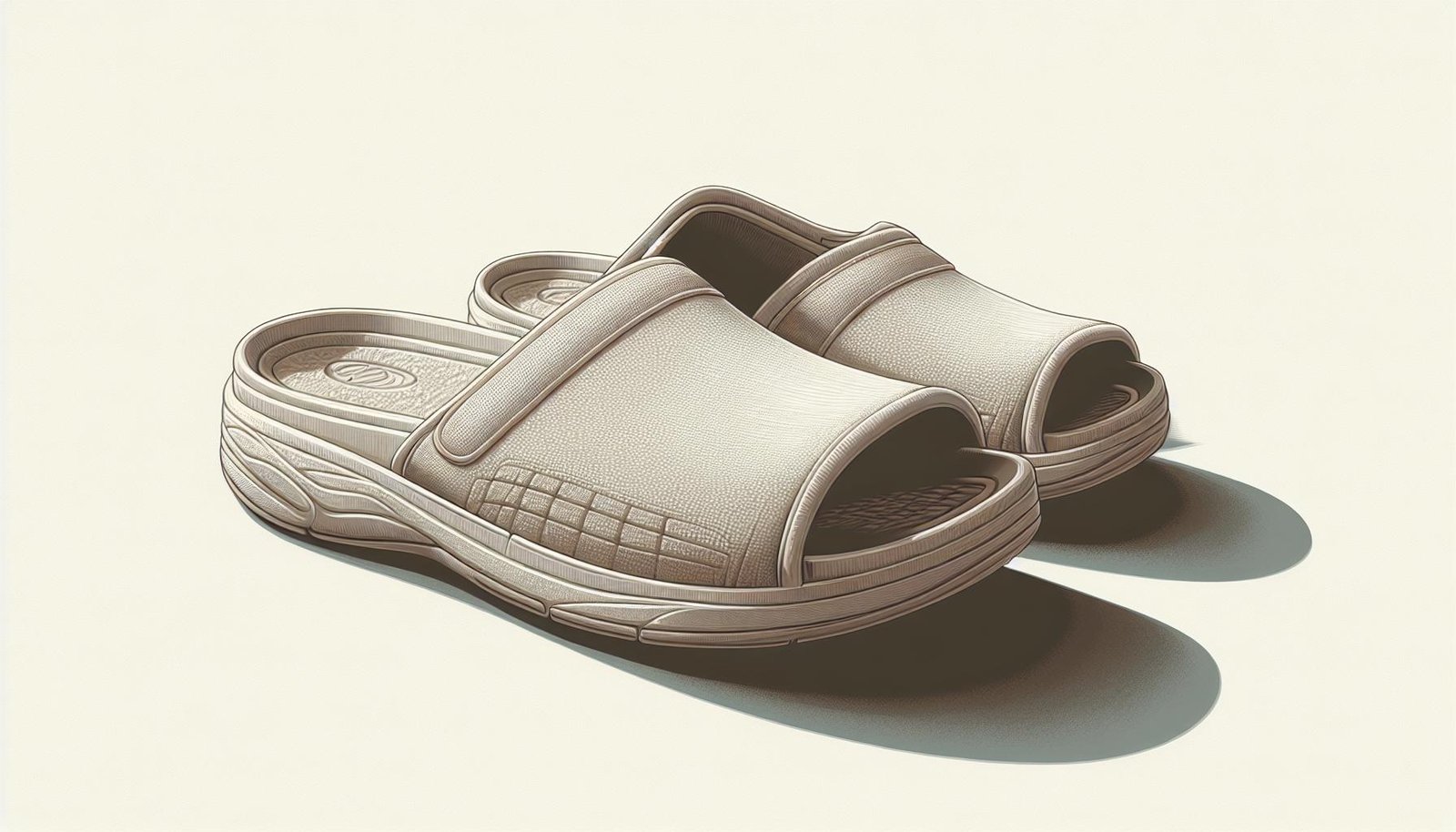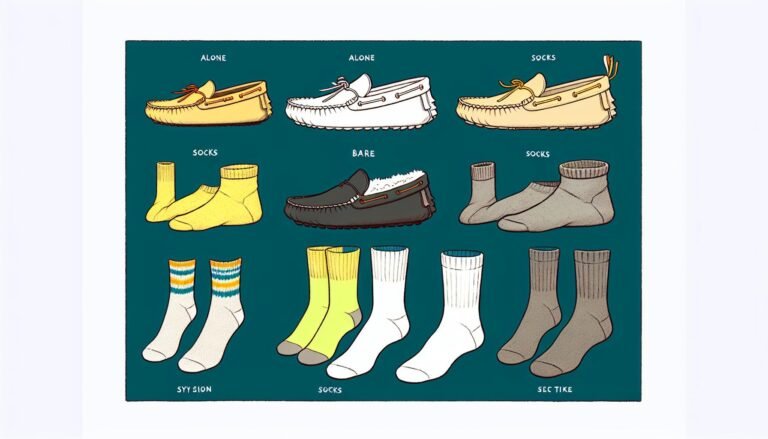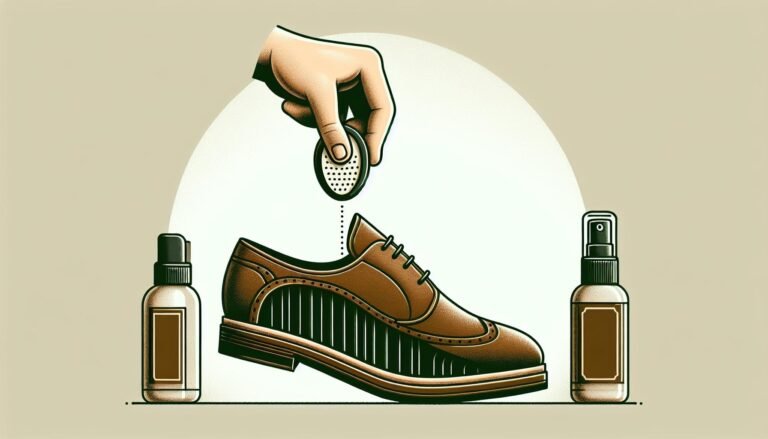Orthopedic Slippers: Benefits, Features & Care Tips Explained
Orthopedic slippers are a game-changer for individuals seeking relief from foot discomfort, especially those with conditions like diabetes. These specially designed slippers offer a perfect blend of cushioning and support, making them a must-have for anyone dealing with foot pain. With features tailored to provide comfort and alleviate discomfort, orthopedic slippers are a top choice for those looking to prioritize foot health.
Designed to offer constant support, orthopedic slippers with solid arch support ensure that your feet are well-cared for throughout the day and night. The soft and lightweight materials used in these slippers make them ideal companions for aching feet, providing a cushiony and comfortable experience. Whether you’re looking for relief from foot pain or simply seeking stylish and supportive footwear, orthopedic slippers are a versatile solution for all.
Key Takeaways
- Orthopedic slippers are specially designed to provide relief from foot discomfort, offering a blend of cushioning and support, making them ideal for individuals with conditions like diabetes.
- These slippers offer features like solid arch support, cushioned soles, and orthotic-friendly designs, promoting comfort, stability, and foot health.
- Choosing orthopedic slippers over ordinary ones can significantly improve foot health by providing targeted relief and support for specific foot issues.
- Individuals with conditions such as diabetes, neuropathy, arthritis, or plantar fasciitis can benefit from orthopedic slippers tailored to address their unique needs.
- When selecting orthopedic slippers, consider factors like arch support, cushioned soles, orthotic-friendly designs, material quality, and toe box width for optimal fit and support.
- To prolong the life of orthopedic slippers, follow maintenance tips like regular cleaning, proper storage, air-drying, and timely replacement when signs of wear and decreased support appear.
Understanding Orthopedic Slippers
Orthopedic slippers are intricately designed footwear tailored to address foot discomfort and specific medical conditions. Crafted with precision, these slippers prioritize functionality and support, aiming to alleviate pain and improve overall foot health. Their construction typically includes features like solid arch support, cushioned soles, and orthotic-friendly designs. The materials used are carefully selected to provide a comfortable and protective environment for the feet, ensuring optimal comfort and stability.
Distinct Features and Benefits
The distinct features of orthopedic slippers set them apart from traditional footwear options. These specialized slippers offer unparalleled benefits, including superior arch support, proper alignment for improved posture, and enhanced shock absorption to reduce impact on joints. The use of soft and lightweight materials ensures a gentle and comfortable fit, accommodating sensitive feet and providing relief from various foot conditions. Additionally, orthopedic slippers promote foot health by encouraging proper foot mechanics and reducing the risk of injuries or discomfort associated with prolonged standing or walking.
The Importance of Proper Foot Support
Orthopedic slippers play a crucial role in maintaining optimal foot health by providing specialized support and comfort. These slippers are uniquely designed to address various foot conditions, offering features like solid arch support, cushioned soles, and orthotic-friendly designs. By aligning the feet correctly and reducing pressure on sensitive areas, orthopedic slippers help improve overall foot mechanics. This aids in preventing injuries, reducing foot pain, and promoting better posture alignment.
The Difference Between Ordinary and Orthopedic Slippers
Ordinary slippers are primarily designed for comfort and style, lacking the specialized support required for individuals with foot conditions. In contrast, orthopedic slippers are engineered to provide targeted relief and support for specific foot issues. With features like contoured footbeds, extra cushioning, and customizable orthotic inserts, orthopedic slippers stand out for their ability to alleviate discomfort, enhance stability, and promote proper foot alignment. Choosing orthopedic slippers over ordinary ones can make a significant difference in foot health and overall well-being.
Who Should Consider Orthopedic Slippers?

Identifying if You Need Special Footwear
When determining if orthopedic slippers are suitable for you, consider if you have specific foot issues that may benefit from specialized support. Conditions like diabetes, neuropathy, arthritis, poor circulation, or plantar fasciitis may indicate the need for orthopedic slippers. If you experience foot pain, swelling, stiffness, or balance problems, orthopedic slippers could provide the necessary support and relief.
Orthopedic Slippers for Various Conditions
Orthopedic slippers cater to a range of foot ailments such as diabetes, joint inflammation, heel pain, or muscle weakness. These slippers are crafted with supportive materials, offering features like a wide toe box for ample toe movement, seamless interiors to minimize friction, and ergonomic designs for even pressure distribution. Individuals with foot conditions seeking enhanced comfort, stability, and improved gait mechanics can greatly benefit from orthopedic slippers tailored to address their specific needs.
Choosing the Right Pair of Orthopedic Slippers

Factors to Consider When Buying
When selecting orthopedic slippers, it’s crucial to consider specific factors to ensure you get the right fit and support for your feet. Here are key factors to keep in mind:
- Arch Support: Look for slippers with adequate arch support to help distribute pressure evenly across your feet.
- Cushioned Soles: Opt for slippers with cushioned soles to provide extra comfort and shock absorption, reducing impact on your feet.
- Orthotic-Friendly Designs: Choose slippers that accommodate orthotic inserts if needed for additional support tailored to your foot’s unique needs.
- Material Quality: Pay attention to the material used in the slippers, ensuring it’s durable, breathable, and gentle on your skin.
- Toe Box Width: Consider slippers with a spacious toe box to prevent crowding and allow for natural toe movement.
Tips for Fitting and Selection
To ensure the right fit and maximum comfort when choosing orthopedic slippers, follow these tips:
- Measure Your Feet: Get an accurate measurement of your feet to select the right size for optimal fit.
- Try Them On: Always try on slippers before purchasing to check for comfort, support, and proper sizing.
- Walk Around: Take a few steps in the slippers to assess how they feel and ensure they provide adequate stability and cushioning.
- Consider Your Foot Condition: If you have specific foot conditions, such as bunions or plantar fasciitis, choose slippers designed to address these issues.
- Consult a Specialist: If you’re unsure about the best type of orthopedic slippers for your needs, consult a foot specialist or orthopedic professional for personalized recommendations.
By considering these factors and tips, you can select the right pair of orthopedic slippers that offer optimal support, comfort, and relief for your feet.
Taking Care of Your Orthopedic Slippers

Maintenance and Longevity
To ensure the longevity and optimal performance of your orthopedic slippers, it’s essential to follow a maintenance routine. Here are some key tips for keeping your slippers in top condition:
- Regular Cleaning: Keep your slippers clean by gently wiping them with a damp cloth. For tougher stains, use a mild soap or cleaner recommended for the specific material of your slippers.
- Proper Storage: Store your orthopedic slippers in a cool, dry place away from direct sunlight or heat sources. Avoid leaving them in humid or damp areas to prevent mold or mildew growth.
- Air-Drying: After cleaning your slippers, allow them to air dry naturally. Avoid using direct heat sources like hair dryers, as high temperatures can damage the materials.
- Rotate Usage: If you wear your orthopedic slippers frequently, consider rotating between multiple pairs to allow each pair to rest and maintain its shape and support.
- Inspect Regularly: Check your slippers regularly for signs of wear and tear, such as worn outsoles, loose stitching, or flattened cushioning. Promptly address any issues to prevent discomfort and extend the lifespan of your slippers.
When to Replace Your Slippers
Knowing when to replace your orthopedic slippers is crucial for maintaining foot health and comfort. Here are some indicators that it may be time to get new slippers:
- Worn Out Soles: If you notice significant wear on the outsoles, especially in areas of high impact or pressure, it’s time to replace your slippers. Worn outsoles can compromise the support and cushioning your feet need.
- Decreased Support: As orthopedic slippers age, they may lose their original support and alignment features. If you start to feel less support or notice changes in how your feet are positioned while wearing them, consider replacing them.
- Visible Damage: Cracks, tears, or visible damage to the materials of your slippers can affect their structural integrity and support. Replace slippers with visible damage to prevent discomfort and potential foot issues.
- Uncomfortable Fit: If your orthopedic slippers no longer feel comfortable or fail to provide the necessary support, it’s time to invest in a new pair. Comfort and support are vital for foot health, especially when dealing with foot conditions or injuries.
Regularly assessing the condition of your orthopedic slippers and replacing them when needed will help you maintain optimal foot health and functionality.
Orthopedic slippers offer essential benefits for foot health, providing support, pain relief, and improved posture alignment. Contrasted with regular slippers, they feature arch support and cushioned soles. Proper care is crucial for maintaining orthopedic slippers, including regular cleaning, appropriate storage, and timely replacement when signs of wear and tear appear. By following these guidelines, individuals can ensure optimal foot health and functionality with orthopedic slippers.
Frequently Asked Questions
What are the benefits of orthopedic slippers for foot discomfort?
Orthopedic slippers offer functionality, support, pain relief, foot health improvement, and posture alignment, especially beneficial for conditions like diabetes.
How should I care for my orthopedic slippers?
To maintain your orthopedic slippers, clean them regularly, store properly, air-dry them, rotate their usage, and inspect for wear and tear.
When should I replace my orthopedic slippers?
Replace your orthopedic slippers when you notice worn out soles, decreased support, visible damage, or an uncomfortable fit for optimal foot health.







